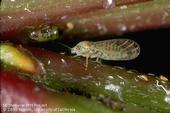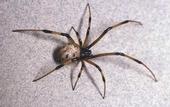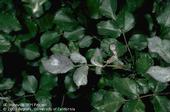
Are you frustrated trying to pull out dandelions by hand? Do they just keep coming back? If so, have you considered using a specialized weed removal tool? There are many different styles to choose from, and some can make removing dandelions a breeze.
A new video produced by UC IPM demonstrates a variety of long-handled and short-handled tools that will help you successfully remove the whole dandelion, taproot and all, to limit regrowth and further spread of the weed in your lawn or landscape.
Watch this and other videos on the UC IPM YouTube channel.

Psyllids are small insects that suck plant juices. Few of the over 140 native species of psyllids in California ever cause significant damage to plants. However, about 18 exotic species accidentally introduced from other countries can be pests on ornamentals or fruit trees. Some are often controlled by natural enemies; others occasionally require suppression with pesticides. Learn about biology, identification and management of psyllids in a revised UC IPM Pest Note: Psyllids authored by John Kabashima, UCCE Orange County; Tim Paine, UC Riverside; Kent Daane, UC Berkeley; and Steve Dreistadt, UC IPM Program. This publication features color photographs of all the...
- Author: Mary Louise Flint
- Author: Rick Vetter

[From the February 2013 issue of the UC IPM Green Bulletin newsletter]
During the last 10 years, a new widow spider has moved into parts of Southern California. The brown widow spider, Latrodectus geometricus, is closely related to the well-known black widow spider, L. hesperus, (Figure 1) that occurs throughout much of California.
A recent survey of widow spiders in Southern California led by retired UC Riverside entomologist Richard Vetter revealed new information about the distribution of brown widows. Currently brown widow spiders...
- Author: Steven Swain

[From the April 2014 issue of the UC IPM Green Bulletin newsletter]
The term biofungicide can have several different meanings, but it is most frequently used to refer to fungicides that contain a microorganism (usually a bacterium or fungus) as the active ingredient. These microbially-based biofungicides are the focus of this article. Biofungicides can control many different kinds of fungi and water molds, although each separate active ingredient controls only certain pathogens. Some also control bacterial diseases. Virtually all of the organisms used in biofungicides on the market today...
- Author: Mary Louise Flint
- Author: Andrew Mason Sutherland

[From the April 2014 issue of the UC IPM Green Bulletin newsletter]
Many consumers are asking for environmentally-friendly services when they hire companies to manage pests in and around their homes. Likewise, a number of California municipalities, institutions, and school systems are requiring pest management contractors to provide evidence of an IPM certification or to follow specific IPM practices. At the same time, advocacy groups such as “GotAnts? Get S.E.R.I.O.U.S.” http://www.gotantsgetserious.org/ are encouraging...


